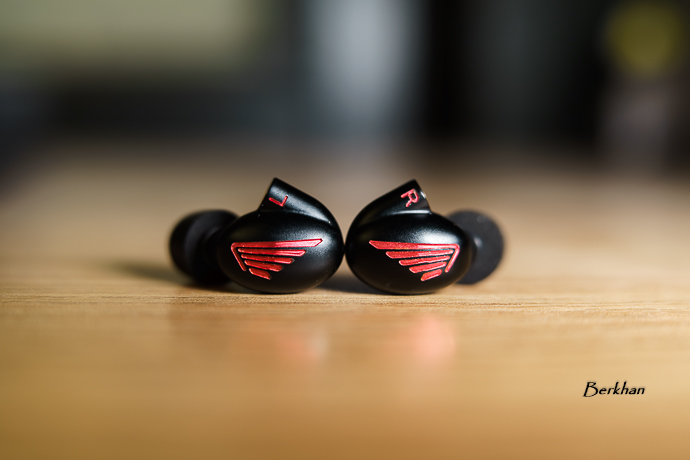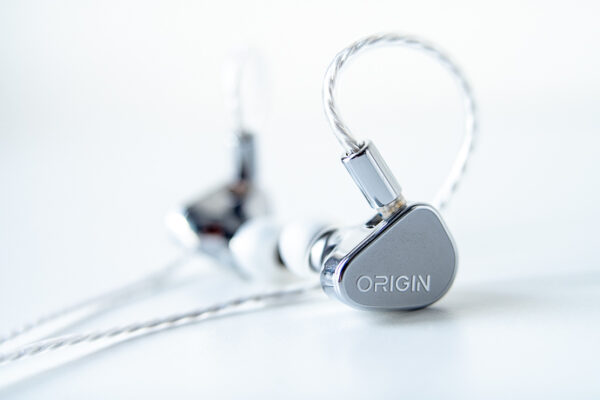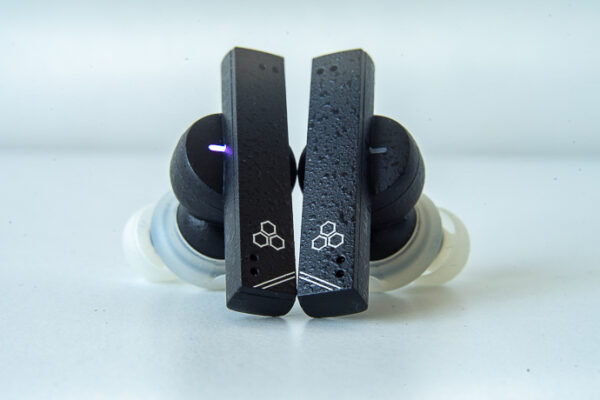MIDS & TREBLES
Black Filters
Mids sound very clean and they’re upfront, but they’re not perfectly flat. Although this mid presentation is very nice after the overall recessed mids of the A4, it still has recessed response on lower mids, taking away the thickness and note size. I associate this response with the small absence of mid bass as well nonetheless. But when you put these two things together, you get a good hitting sub bass but overall somewhat thin mid response, especially on lower region. So you get an uneven response, starting from mid bass to upper mids.
Upper mids on the contrary are highlighted and they have very nice transparency overall. They’re quite upfront with this filter and that also applies to lower treble region, making the IEM sound very energetic and engaging. It has sharp trebles which are very well accentuated and they have good extension for this price. Nothing very aggressive though.
Blue Filters
The blue filters are mostly like the black filters, but with even more sparkle and clarity on upper mids and lower treble. This is the most engaging and v-shaped response that you can get. It’s not a natural sound to me so these ones are definitely not my favorite choice of filters. I don’t like a thinner mid presentation but if you like the clarity you can give it a try. I think they give a somewhat “digital” response.
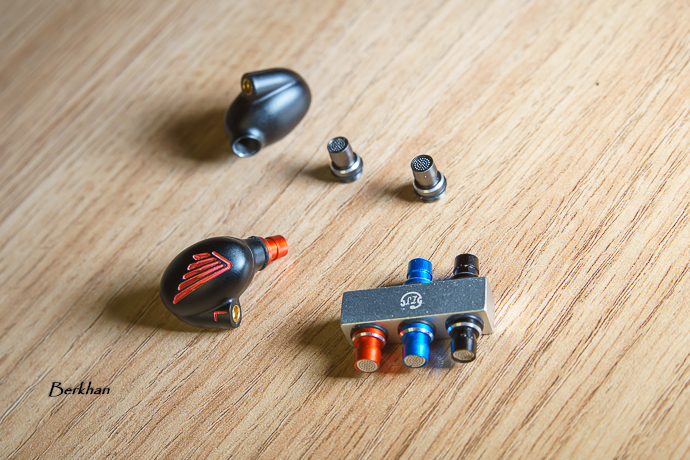
LZ A5
Red Filters
The red filters give you a more even response with more coherency and balance in the mids & trebles. This response I think is the more natural and organic one, since there’s no lift on the upper mids and lower treble this time around. These filters give the IEM a better timbre and note thickness (still not enough for me, but good). Mids are a little darker and thicker with this setup, and I think it plays well with the good sub bass response which gives the IEM a good intimacy and engagement. Red filters, to me, are the better filters when compared to blue & black ones. And yet, the choice is always yours and that’s the very idea of these filters in the first place.
Gray Filters
Just like the blue ones, the gray filters sound like the red filters but with a little bit more darkness, coherency and note thickness. Despite the difference is minimal, my preference is the gray here. I like the warm and darker tones with IEMs so this shouldn’t come as a surprise to you. Treble still has good definition and energy, but they have a more natural, effortless way to shine and accompany the mids. So these are definitely my choice of filters but your experience can be different.
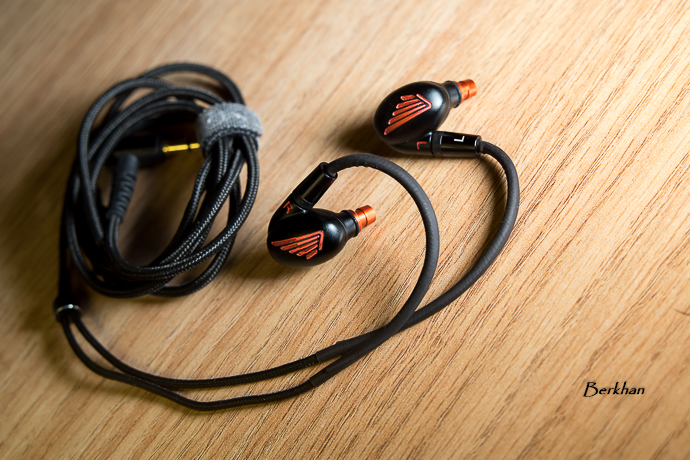
LZ A5
TECHNICAL PERFORMANCE
The LZ A5 has good dynamics and it has good resolution, but you can get a similar performance with the IEMs that cost similar or less. So it doesn’t stand out from the crowd, yet it puts up a good job. Sound stage wise I can’t say anything negative since it doesn’t have a narrow or very close, too intimate staging when I compare it to the competitors at this range.
It has a good background darkness but it’s not fully black, yet I can’t be harsh and say it’s not good in this regard. One of the things that left me impressed is the dynamics and good transparency with that. Separation is very nice as well but I think keeping the mid bass level low helps this attribute quite good, otherwise it could’ve been bloated. That’s a feeling after my tests so it maybe isn’t true though, but this is my opinion.
Details and clarity are very nice. This trait especially draws your attention with the black & blue filters, since they give treble and upper mids a boost. It’s indeed a clean sounding monitor like I remarked earlier in this review. The overall balance apart from mid bass and lower mids is pretty good, notably with red & gray filters. It also controls the elements very well, they don’t stick out and make edgy sounds to your ears so that’s a positive point.
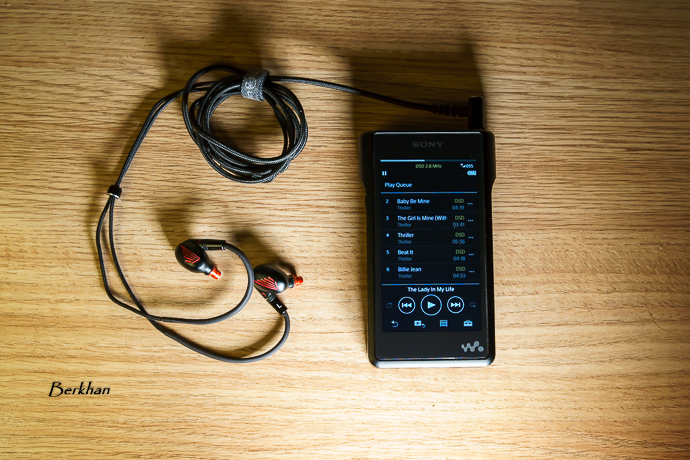
LZ A5
COMPARISONS
vs. FiiO F9: The LZ A5 controls everything much better and it has a similar sound stage, together with good hitting bass with more authority, yet with more control. They have a very similar shape and design. Sound – wise the A5 wins.
vs. FiiO F9 Pro: Again the A5 is more controlled and authoritative, it has better dynamics and better tonality, especially with gray filters. The F9 Pro puts up a better fight but the A5 edges out. But they have a very very close presentation to be honest and they both give good performance for the money, but I would still go with the A5 here.
vs. LZ A4: A4 has a bigger bass with the same kind of mid bass absence. But I think the A5 has a more natural response there, since the A4’s bass can become too much sometimes. But the A4 wins in the sound stage department, especially in terms of depth. The A5 has more of a studio feeling to it, compared to the concert hall presentation of the A4. So these two are two different type of IEMs, but certainly the A5 wins in ergonomics and fit, as well as mids and treble response, which is the area that A4 lacks.
vs Kinera IDUN: The IDUN from Kinera has a very close response to the LZ A5, but with a better mid bass and leaner sub bass performance. They both have good clarity & resolution, but the IDUN I think has more transparency and detail level. Instrument separation is not very different but the IDUN has the edge. Sound stage performances are similar. The IDUN has a better fit with a more ergonomic shape and since it doesn’t have memory wire, I would go with the IDUN between the two for fit.
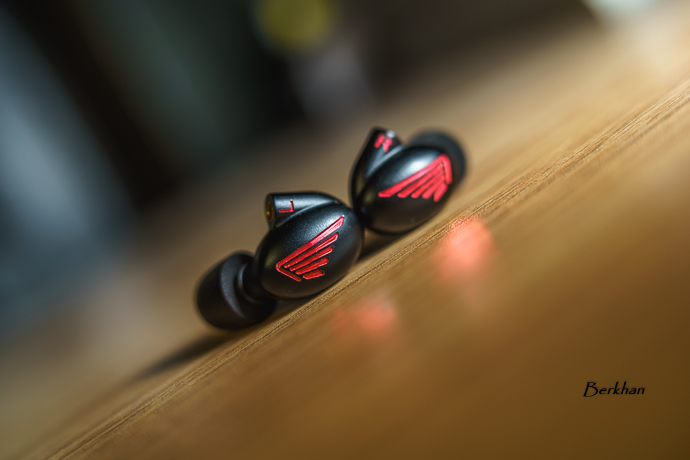
LZ A5
SUMMARY
The LZ A5 is a very nice value to the market once again from Lao Zhung. It’s easy to drive, easy to fit, easy to use in daily life and it has good build quality as far as I’m concerned. But to be honest I expected more from its sound. Granted, it has a more balanced approach compared to the A4 with good clarity, but it didn’t impress me like the LZ A4 did. The LZ A5 could be the better IEM then the A4, and you can argue that LZ came up with a more conventional IEM with 4 types of filters, but I think they could’ve done even better.
I expect an IEM from LZ that can go to higher levels, just like the LZ Big Dipper. Of course that IEM costs well over 500$ but I think in the sub-300$ range, the competition is extremely tight and we see new IEMs and even new manufacturers almost every day. I know that Lao Zhung has a great amount of knowledge to come up with great IEMs, so I guess he can make more difference with more technical opportunities, which a high end IEM configuration can provide.
To be continued…





